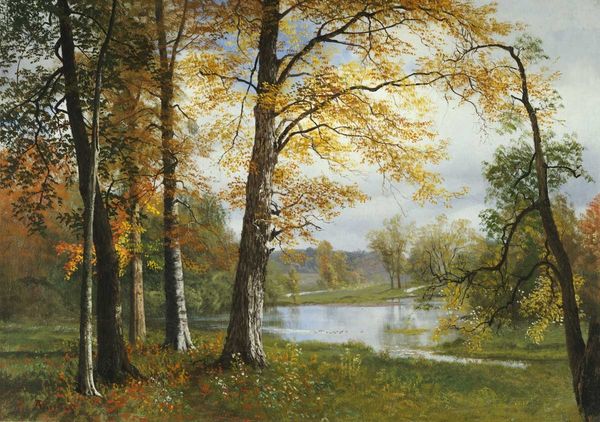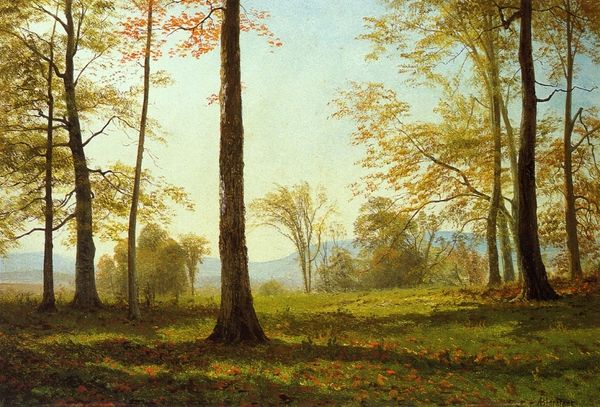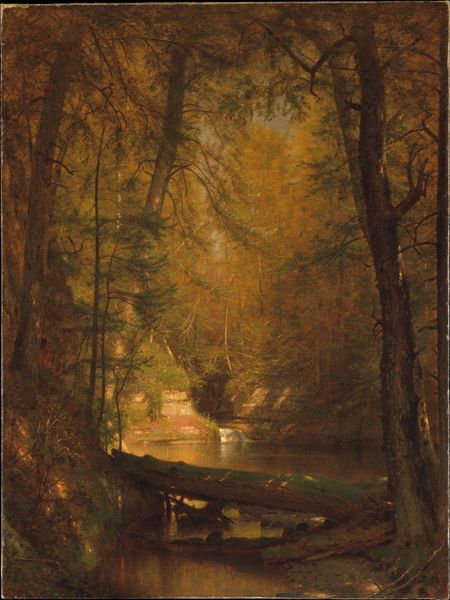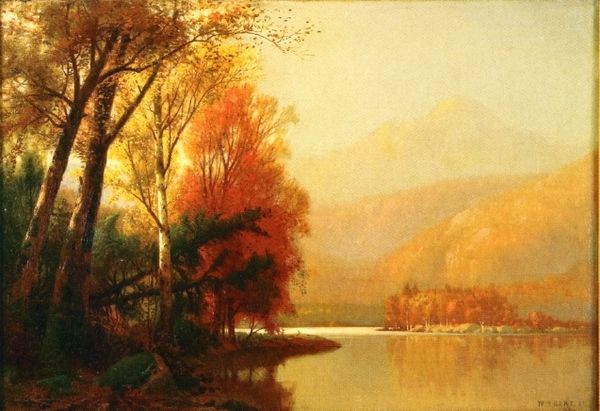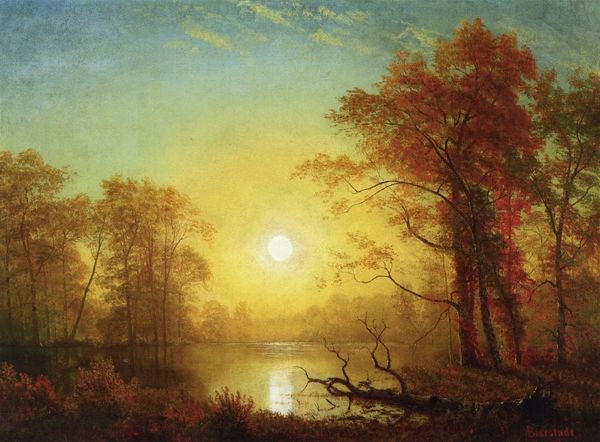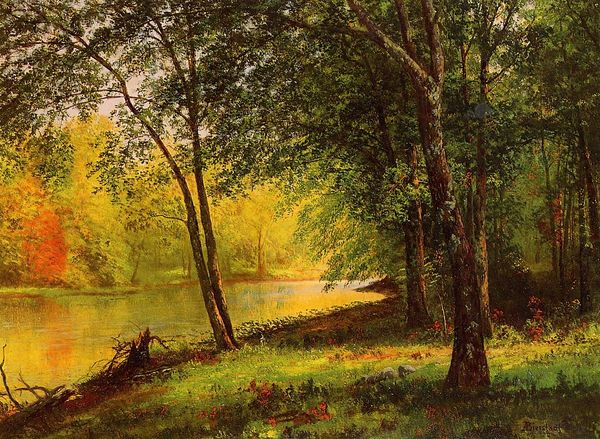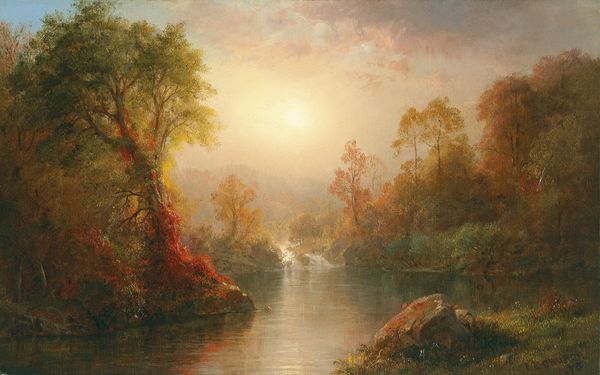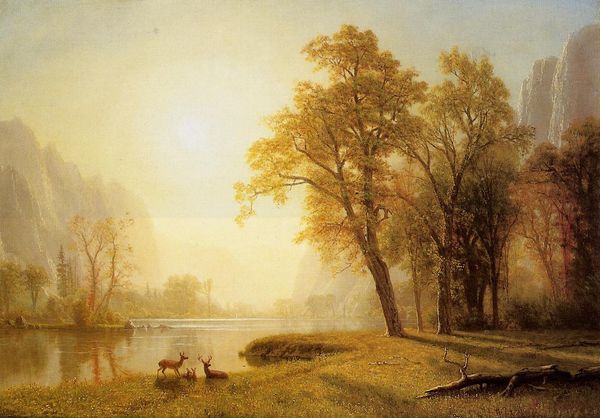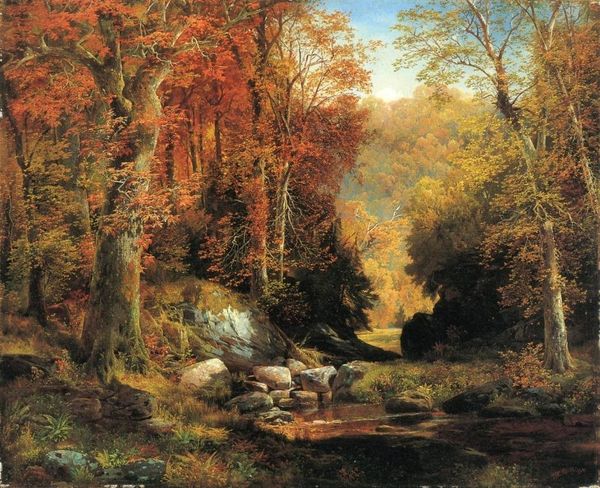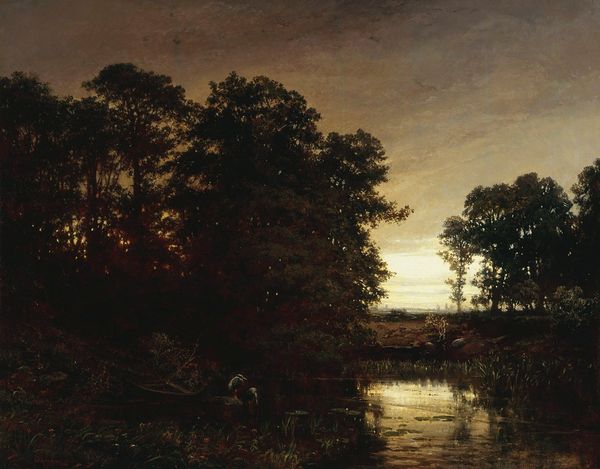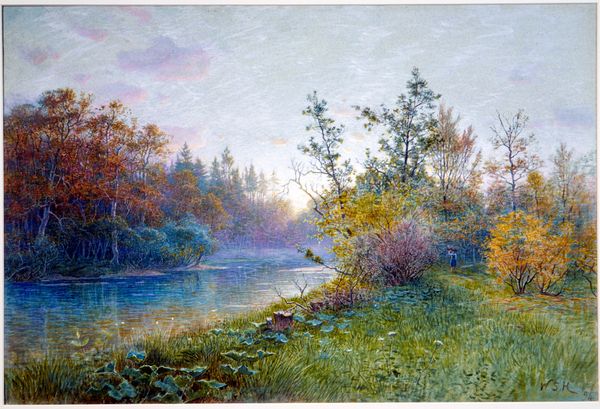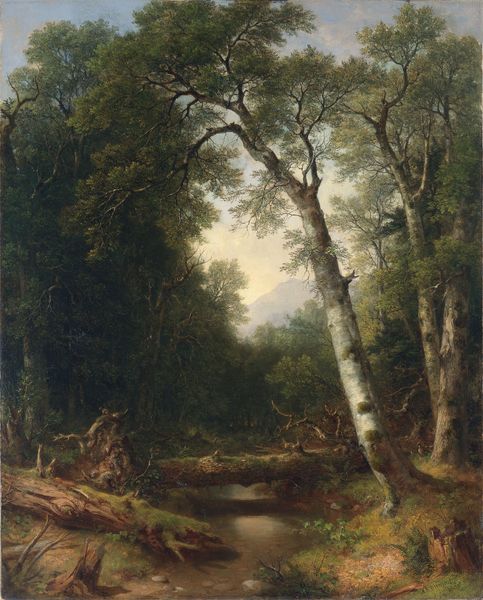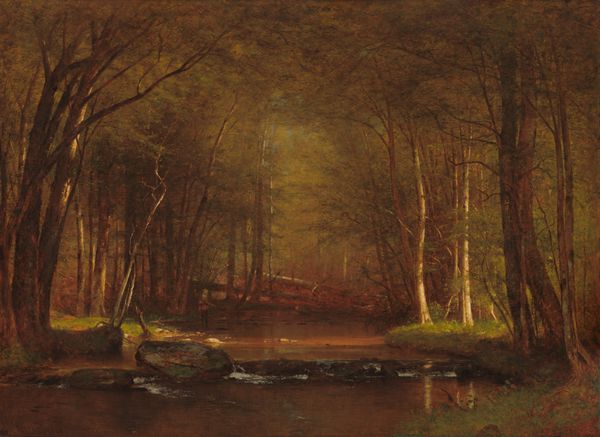
Dimensions: 24 1/8 x 20 in. (61.3 x 50.8 cm)
Copyright: Public Domain
William Trost Richards painted "Indian Summer" to capture a melancholic American scene in the late 19th century. Here, the trees cloaked in golden leaves, evoke a sense of transient beauty. This motif of autumn, a season of decline, resonates deeply with the ancient symbolism of the cycle of life, death, and rebirth. We see echoes of this in classical depictions of Pomona, the Roman goddess of fruitful abundance, often shown amidst the harvest, embodying nature’s final, brilliant display before winter. The golden hue links back to the spiritual significance of gold in religious iconography, representing enlightenment. The overall composition elicits a bittersweet emotion—the ephemeral nature of beauty, the inevitability of change. This evokes a powerful psychological reaction as it reminds us of our own mortality and the passage of time. The motif of autumn extends beyond this landscape, resurfacing in various cultural contexts as a poignant symbol of transition.
Comments
No comments
Be the first to comment and join the conversation on the ultimate creative platform.
